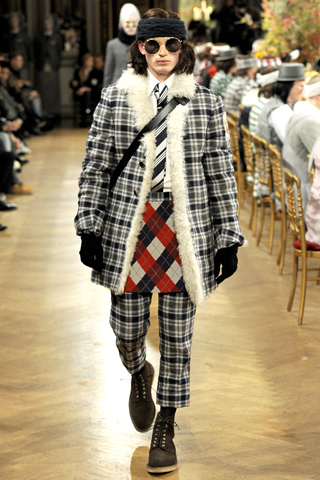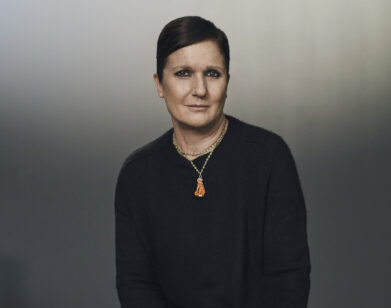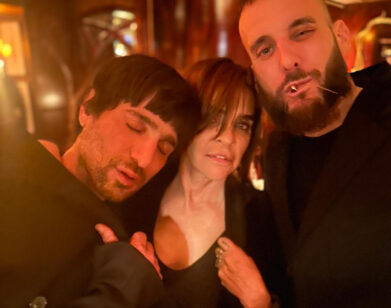Model Men of Many Eras

MIHARA YASUHIRO; JOHN GALLIANO
The male muse is gaining ground on Paris runways. John Galliano took his leap into body dressing with Rudolf Nureyev, and Mihara Yasuhiro delved into Oscar Wilde.
Did Wilde’s humor inspire Yasuhiro’s deconstruction of the old English school uniform? As his wife Hiromi lifted the audience inches from the ground with a haunting jazz piano set, the designer showed school jackets with white piping, and baggy shorts over mid-calf leggings. Before long, the jackets had turned into shawls on one side. His more wizardly way came out through cable knits printed over fine-knit tailoring. And he produced a fantastic pair of 19th-century shoes, sprayed partially gold and designed to “flake like Victorian statues.”
John Galliano’s choice of Rudolf Nureyev, the Russian ballet legend, as the fashion plate for his collection couldn’t be more apropos, as the design contrast of outerwear and bodywear is driving mens’s style now. Nureyev’s Tartar roots came out in the collection’s heavy, vaguely ethnic weather gear. Inevitably, before long the dancer came through in a mix of warm-up tights, soft tailoring and fur.
ANN DEMEULEMEESTER, THOM BROWNE
Patti Smith, in Paris for a series of performances, was front-row center at Ann Demeulemeester’s show on Saturday. It’s been fascinating over the years to watch Demeulemeester, whose muse has always been Smith, take bits and pieces for very sexy menswear. This collection launched from the vest: used to style jackets; seamed and slitted around the waist and doubled up on lapels to give the impression of a vest worn over a jacket. Finally, she reduced the vest to a bare-bones outline.
For the past few seasons, Bernard Willhelm has presented his collections as tableaux vivants rather than shows, with models depicting merry prankster activities. This time, Willhelm piled on extra-large cardigans and tunics patterned with world maps or old airmail letter stripes, with clashing-patterned athlete’s body suits (tights with suspender straps). This look leaves men rather exposed, but Bernhard mercifully added a shirt tucked into the tights here and there.
Thom Browne’s simple beginnings—cropped jackets and abbreviated pants—have given way to an increasingly unruly imagination. For fall, he is in epic form. Imagine, nonsensically, a group of American revolutionaries circa 1780, at a Thanksgiving banquet in a gilt-covered Paris salon. Browne sat about 30 models around a long, groaning table in the center of a room where Yves Saint Laurent once held his couture shows. Gradually, each one of these revolutionary peacocks rose for a turn around the table.
It’s a historic reconstruction of late 18th-century menswear, but with cable-knit white wig hats, loud green-and-white plaid overcoats, and a black astrakhan cape that American patriots missed out on. The frock coats and vests were banded in tricolor ribbon, and Browne experimented with bloomers and breeches and mixed plaids with abandon. Occasionally he inserted some 21st-century pieces, like a color patched racing jacket. And the feather-covered hats and attractively sinister thick wire-rimmed spectacle shades (Robespierre wore them during the French Terror) were period twists sure to carry over.






